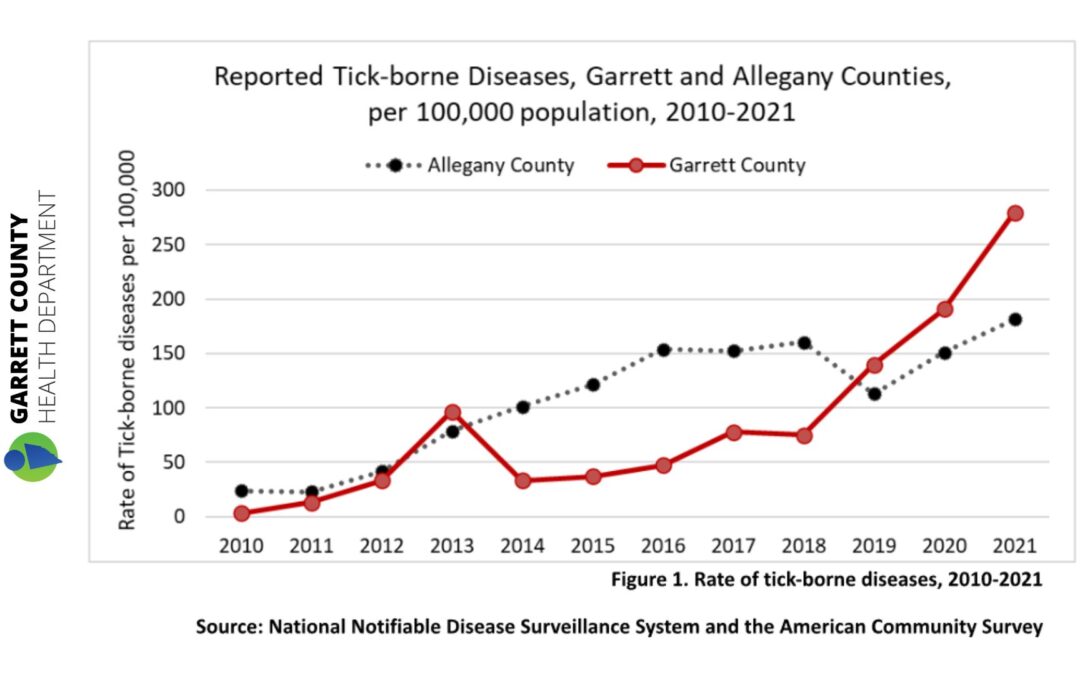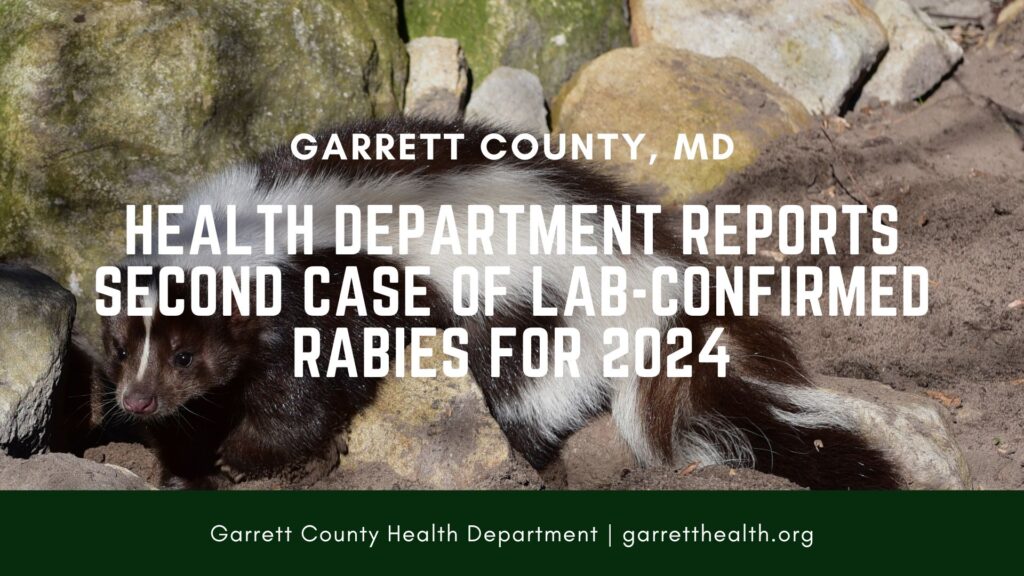By Julie Kebisek, MPH
May is Lyme disease prevention month, but ticks that live in our area can spread more than just Lyme disease. The spring season brings warmer weather and higher humidities, favorable conditions for many species of disease-carrying ticks. While Lyme disease is the most common tick-borne disease in the United States and Maryland, the East Coast’s climate is favorable for ticks that spread many other bacteria, viruses, and parasites, such Anaplasmosis, Ehrlichiosis, Babesiosis, Spotted Fever Rickettsioses, and Heartland and Bourbon Virus Diseases.
The rate of tick-borne diseases in Garrett and Allegany counties has increased exponentially from 2010 to 2021 (See Figure 1). Reported tick-borne diseases, primarily Lyme disease, increased from 3 cases per 100,000 population in 2010 to 280 cases per 100,000 in 2021. In Allegany County, the rate increased from 24 to 182 cases per 100,000 from 2010 to 2021. While this increase may be due to a variety of factors such as an increase in testing and reporting, it is well known that new species of infected ticks are being found in new geographic regions.

Ticks in Garrett County: Garrett County Health Department’s Environmental Health program collects ticks from select areas throughout the county each year and sends them to the Centers for Disease Control and Prevention (CDC) for pathogen testing. From 2019 to 2021 a total of 531 ticks were collected. Nearly half of these ticks were positive for Borrelia burgdorferi sensu stricto, the bacteria that causes Lyme disease. Another emerging Borrelia bacteria that causes Hard Tick Relapsing Fever, Borrelia miyamotoi, has been increasingly found in new areas throughout the country. In Garrett County, only 3 of the 531 ticks (0.6%) tested positive for this bacterium. The second-most common bacteria found in these ticks was Anaplasma phagocytophilum, a bacterium that causes Anaplasmosis; 20 of 531 (3.8%) ticks tested positive for this bacterium. CDC also tested these ticks for Babesia microti (a parasite that causes Babesiosis), and two other Borrelia sub-species, however, the 531 ticks collected from 2019-2021 were negative for B. microti and these other Borrelia sub-species.


Tick bite prevention: Prevent tick bites in yourselves, your family members, and pets by taking precautions when spending time in tick habitat, such as the area pictured to the left. Identifying ticks and potential diseases they may carry can help with early recognition of symptoms if you become infected. Ticks are most often found in tall grasses and woody or brushy areas. Ticks do not climb trees or stray far from the ground. Check yourself and your pets after spending time in potential tick habitats and safely dispose of any ticks you find. Can’t identify a tick and need help? Submit your tick to Garrett County experts with this form.
If you find a tick on yourself, do not be alarmed. Most tick-borne diseases can only be transmitted after the tick has been feeding for 36-48 hours. The Centers for Disease Control and Prevention provides recommendations for tick bite prophylaxis to prevent Lyme disease. However, this may not always be necessary following a tick bite. If you experience fever, headache, joint pain, muscle pain, or rashes 3-30 days after spending time in tick habitat, contact your healthcare provider. Dogs can get ill or die from tick-borne diseases too; talk to your veterinarian to ensure your pets are protected from tick-borne diseases throughout the year.
- Featured Today on Go! Garrett County: Harvest Hub Update & Second Funding Round! - May 1, 2024
- Health Department Reports Second Case of Lab-Confirmed Rabies for 2024 – Announces Low-Cost Rabies Clinics for 2024 - May 1, 2024
- REQUEST FOR RESUME/APPLICATIONS (RFR/A) – GARRETT COUNTY HEALTH DEPARTMENT – REGISTERED NURSE HOME VISITS - May 1, 2024









